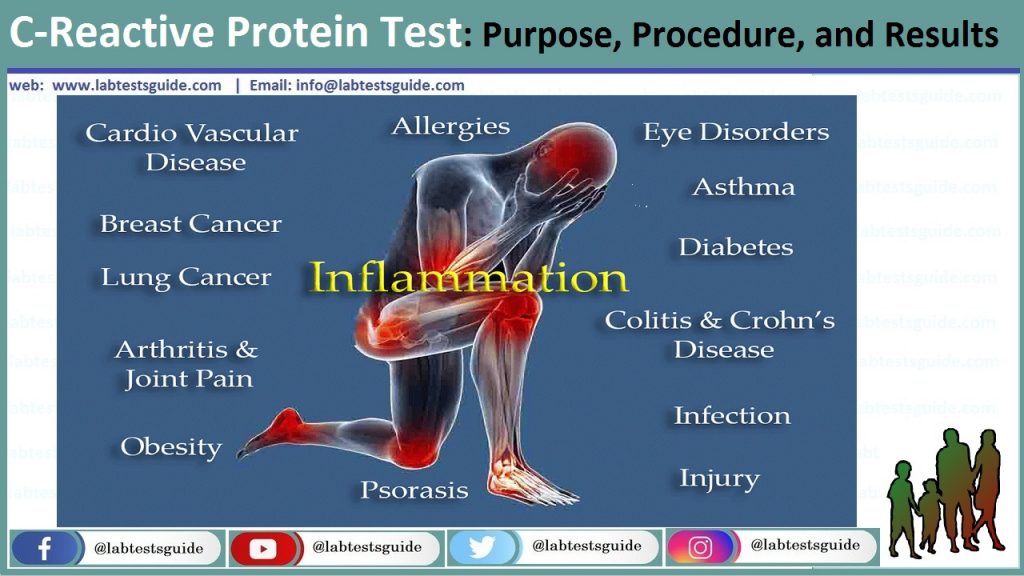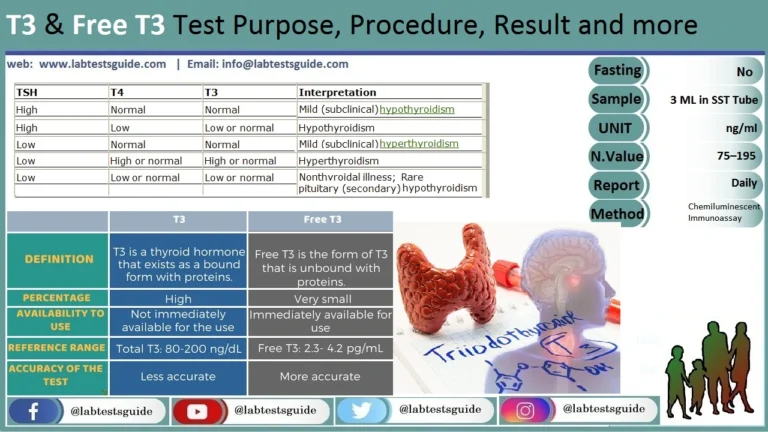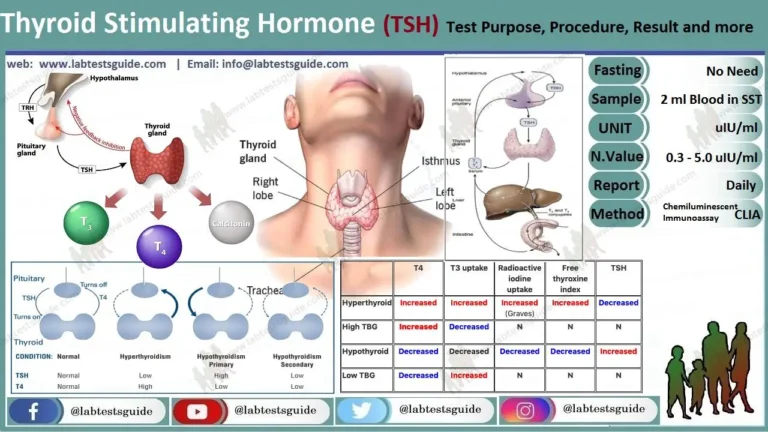C-reactive protein (PCR) is a substance produced by the liver in response to inflammation.
Other names for PCR are the highly sensitive C-reactive protein (hs-CRP) and the ultrasensitive C-reactive protein (us-CRP).
A high level of CRP in the blood is a marker of inflammation. It can be caused by a wide variety of conditions, from infection to cancer.
High levels of CRP may also indicate that there is inflammation in the arteries of the heart, which can mean an increased risk of heart attack. However, the PCR test is an extremely nonspecific test, and PCR levels can be elevated in any inflammatory condition.

Why Get Tested:
- To identify the presence of inflammation.
- To monitor response to treatment for an inflammatory disorder.
When to Get Tested:
- When your healthcare provider suspects that you have an acute condition causing inflammation, such as a serious bacterial or fungal infection.
- when you are suffering from an inflammatory disorder such as arthritis, an autoimmune disorder, or inflammatory bowel disease.
Purpose:
- This is done in inflammatory diseases like acute rheumatic fever or rheumatoid arthritis and bacterial infection.
- It will help in the diagnosis of coronary artery disease.
- This test can be done to diagnose bacterial endocarditis.
- To diagnose appendicitis.
- To diagnose active collagen vascular diseases.
- CRP can be used to monitor:
- Rheumatic fever.
- Crohn’s disease.
- Rheumatoid arthritis.
- Ankylosing spondylitis.
- Reiter’s syndrome.
- Psoriatic arthropathy.
- Still’s a disease.
- hs-CRP and its relation to vascular diseases:
- Hs-CRP is a high predictor for myocardial infarction, stroke, peripheral vascular disease, and sudden cardiac death.
- The association between hs-CRP and vascular diseases is independent of age, smoking, hypertension, and diabetes mellitus.
- hs-CRP is a stronger predictor of risk than LDL-cholesterol.
- Measurement of hs-CRP does not replace but complements the evaluation of lipids and classical coronary heart disease risk factors in primary prevention.
- High sensitivity assay can find CRP as little as <0.5 mg/L.
- hs-CRP has a significant association for future risk of metabolic syndrome, diabetes mellitus, and hypertension.
Increased Values Are Seen In:
- It is raised in Inflammation, necrosis or tissue injury.
- Acute, noninfectious diseases like arthritis, acute rheumatic fever, and Crohn’s disease.
- Collagen vascular diseases like lupus erythematosus and vasculitis.
- Acute myocardial infarction.
- Bacterial infections like postoperative wound infection, urinary tract infection, or tuberculosis and meningitis.
- Pulmonary infarction.
- Malignant diseases.
- Transplant rejection (kidney or bone marrow).
- Active Rheumatic disease (Rheumatoid Arthritis, Rheumatic fever).
- Burns complicated with infection.
- Infection in immunocompromised patients.
- Postoperative complication like a subphrenic abscess or septicemia.
Decreased Values Are Seen In:
- The use of steroids and non-steroidal anti-inflammatory drugs can significantly lower the CRP level.
CRP Level Is Useful In:
- clinical evaluation of SLE, Leukaemia, Blast crisis and ulcerative colitis.
- There is a good correlation with ESR, but CRP appears and disappears earlier than changes in ESR.
- The level of CRP increases dramatically than other Acute-phase proteins. So CRP is more useful as acute-phase proteins.
- The quantitative test is more useful than a qualitative test.
Jones Criteria For The Diagnosis Of Rheumatic Fever:
| Manifestations | Signs and symptoms |
| Major | Polyarthritis, carditis, subcutaneous nodule, chorea, Erythema marginatum |
| Minor | Fever and arthralgia |
| Minor | Raised CRP, raised ESR, evidence of group A streptococcal infection and prolonged PR interval on ECG |
Possible References Used





